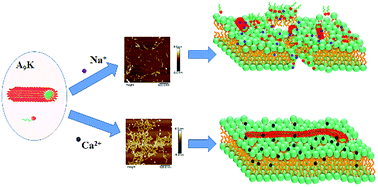Effects of salts on the self-assembly behavior and antibacterial activity of a surfactant-like peptide†
Abstract
Self-assembling peptides have become one of the most promising antibacterial agents due to their superior properties, such as simple molecular composition, favorable assembly structures, and rich designability. For maximum application in vivo, their activities in the presence of salts are desirable, however, the potent correlation between peptide nanostructures, antibacterial activity, and salt resistance behavior remains poorly explored. Previously, we have demonstrated that the potent antibacterial activity of a designed surfactant-like peptide Ac-A9K-NH2 benefited from its high self-assembly ability and appropriate size of its self-assembled nanostructures. In this study, we investigated the effect of salts on its self-assembly behavior and antibacterial activity. The results indicated that the flexible and long nanofibrils formed by Ac-A9K-NH2 in the presence of CaCl2 were adverse to its membrane insertion, leading to the reduction of antibacterial activity. Comparatively, Ac-A9K-NH2 maintained its potent antibacterial activity in the presence of NaCl due to its suitable shape and size of nanostructures. The newly formed nanofibers and nanorods facilitated the penetration of peptides into the bacterial membrane, forming nanopores and eventually leading to the lysis of bacteria. The high antibacterial activity and NaCl tolerance of Ac-A9K-NH2 make it a promising antibacterial agent at elevated salt concentrations.


 Please wait while we load your content...
Please wait while we load your content...